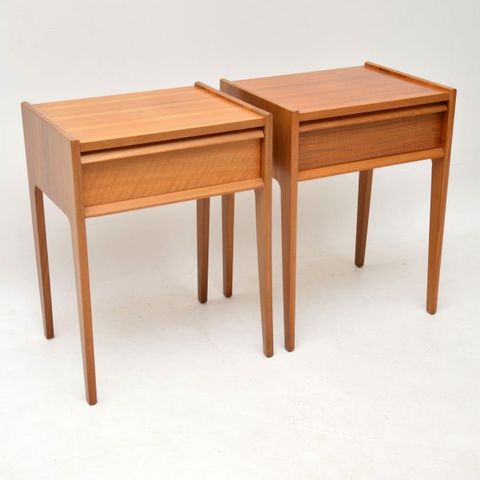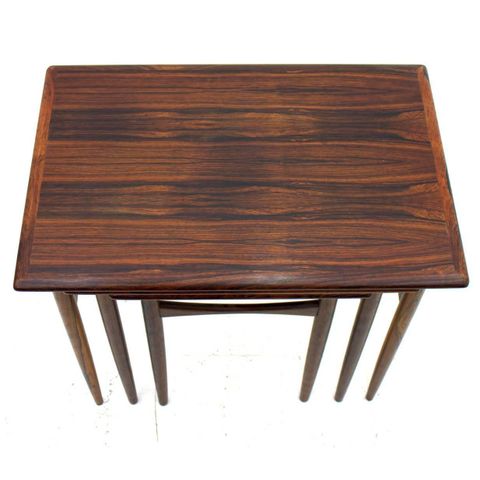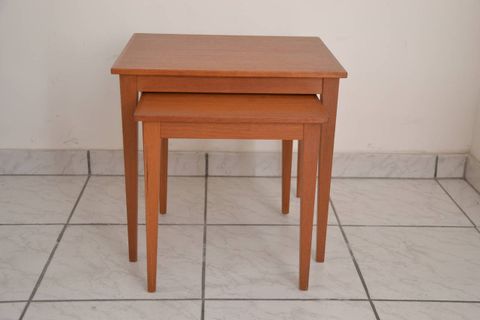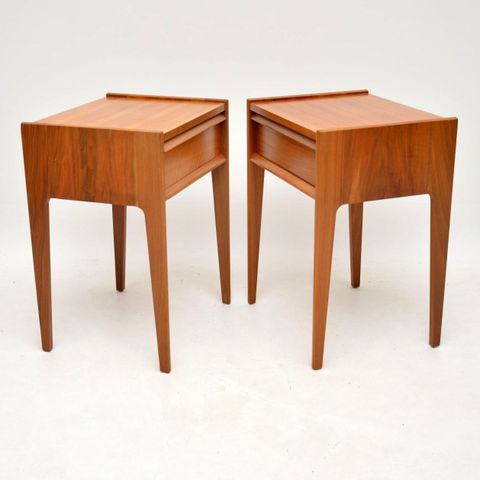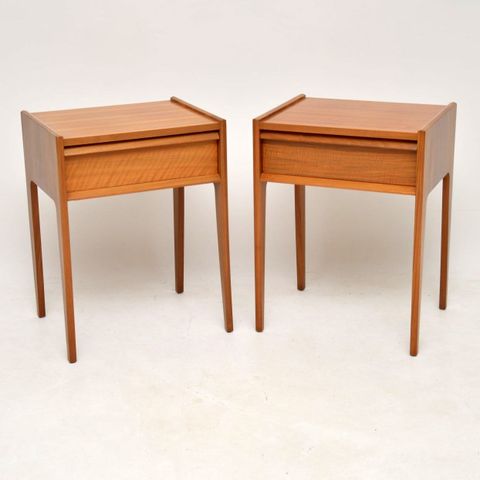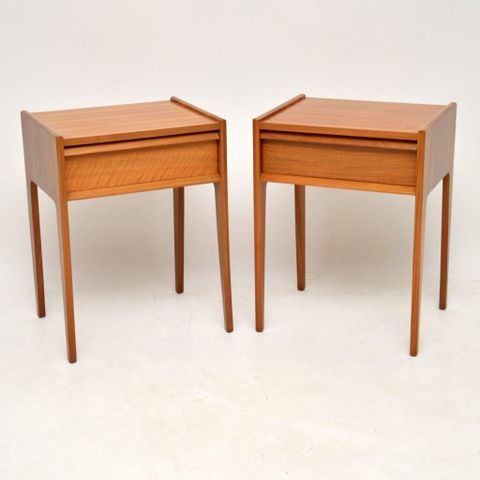Walk into any well-curated mid-century modern home, and you’re likely to spot them: a set of elegant walnut nesting tables. These aren’t just functional pieces; they’re miniature sculptures, embodying a specific era’s design philosophy and a dedication to quality that’s often hard to find today. Let’s pull back the curtain and see what makes these tables so special.
Remember those times when furniture felt… well, made? Like someone actually poured their skill and care into shaping it. That’s the feeling you get from 1960s walnut nesting tables. They were born in a time when form followed function, but beauty was never an afterthought. These tables, often crafted from rich, warm walnut wood, offer a unique blend of practicality and understated elegance. But what exactly is it about them that captivates us, even decades later? It’s all in the details, the materials, and the sheer thoughtful design.
The Allure of Walnut: A Wood with Character
Walnut was a star player in mid-century furniture design, and for good reason. This hardwood boasts a stunning array of natural colors, from a pale brown to a deep, rich chocolate, often with beautiful, swirling grain patterns. For 1960s furniture makers, walnut was a dream to work with. It’s dense enough to be durable but also relatively easy to carve and shape, allowing for those smooth, organic lines that define the era. The finish on these tables was usually a satin or semi-gloss lacquer, which not only protected the wood but also enhanced its natural luster, giving it that inviting glow. Think about the warmth it brings to a room – it’s like a hug for your living space. And the scent, even after all these years, can still evoke a sense of history and quality. It’s this inherent beauty and workability that made walnut the go-to for furniture that needed to be both robust and refined.
The Genius of Nesting: Space-Saving Sophistication
The concept of nesting tables is pure brilliance, isn’t it? You get multiple surfaces when you need them, and they tuck away neatly when you don’t. This was particularly important in the 1960s, as homes weren’t always palatial. Designers embraced this practical need with gusto. The tables are typically designed with a hierarchical size difference, allowing each smaller table to slide perfectly beneath the larger one. This isn’t just about fitting; it’s about proportion and balance. The legs are often slender and tapered, a hallmark of mid-century style, giving the tables a light, almost floating appearance. This thoughtful engineering means you can have a coffee table and several side tables at your disposal without cluttering your floor space. It’s a clever trick that still feels incredibly modern.
Joinery and Construction: Built to Last
This is where the true ‘craftsmanship’ really shines. Unlike some mass-produced furniture today, 1960s walnut nesting tables were often built using traditional woodworking techniques. You’ll find sturdy joinery like mortise and tenon, dovetails, or well-fitted dowels. These aren’t just glued-together pieces. The makers understood that furniture needed to withstand the test of time and use. Look closely at the connections between the legs and the tabletop, or where different pieces of wood meet. You’ll likely see a level of precision and attention to detail that speaks volumes about the skill of the artisan. This robust construction is a key reason why so many of these tables are still around and in excellent condition today. They were made by people who took pride in their work, creating pieces that were meant to be enjoyed for generations.
Design Details: The Little Things That Matter
Beyond the basic structure, it’s the subtle design elements that elevate these tables. Think about the edges of the tabletops – are they sharp, or do they have a gentle, rounded bevel? This softening of edges was common, adding to the tables’ approachable feel. The leg design itself is often a work of art, with those iconic tapered shapes, sometimes with a slight splay. Even the way the tables nest together involves precise angles and clearances. Some sets might feature decorative elements, like a subtle inlay or a unique leg attachment, though often the beauty of the walnut grain and the clean lines were enough. These details weren’t accidental; they were carefully considered to create a harmonious and aesthetically pleasing whole. It’s this refined sensibility that makes them so appealing.
Versatility: More Than Just a Sidekick
While primarily serving as side tables or a coffee table ensemble, these walnut nesting tables are surprisingly versatile. Need a temporary workspace for a laptop? The largest table might just do the trick. Entertaining guests and need extra surfaces for drinks and appetizers? Pull out the smaller ones. They can even serve as plant stands or display shelves for your favorite decorative items. Their neutral, sophisticated aesthetic means they can blend seamlessly with various decor styles, not just mid-century modern. They can add a touch of warmth and organic texture to a more contemporary space or complement a traditional setting with their timeless appeal. Their adaptability is a testament to their smart design.
Caring for Your Walnut Treasures
Owning a piece of history like a 1960s walnut nesting table comes with a little responsibility, but it’s not difficult. The original lacquer finish provides good protection, but it’s wise to avoid harsh chemicals. A soft, damp cloth is usually all you need for daily dusting. For deeper cleaning, a mild wood cleaner specifically designed for finished wood is best. Always use coasters to protect the surface from heat and moisture – those rings from a hot mug are a nesting table’s worst nightmare. And if you happen to notice any minor scratches or wear over time, don’t despair. Walnut is forgiving, and often, minor imperfections add character. For more significant restoration, consult with a furniture restoration specialist who understands vintage wood finishes. Proper care ensures these beautiful pieces continue to grace your home for years to come.
So, the next time you see a set of 1960s walnut nesting tables, take a moment to appreciate the artistry involved. From the rich, characterful walnut wood to the clever nesting design and the robust joinery, these tables are a testament to an era of exceptional craftsmanship. They offer a perfect blend of beauty, practicality, and enduring quality. More than just furniture, they are pieces of history, designed to enhance our living spaces and stand the test of time. They remind us that well-made things, crafted with care and intention, truly do have a lasting legacy.

